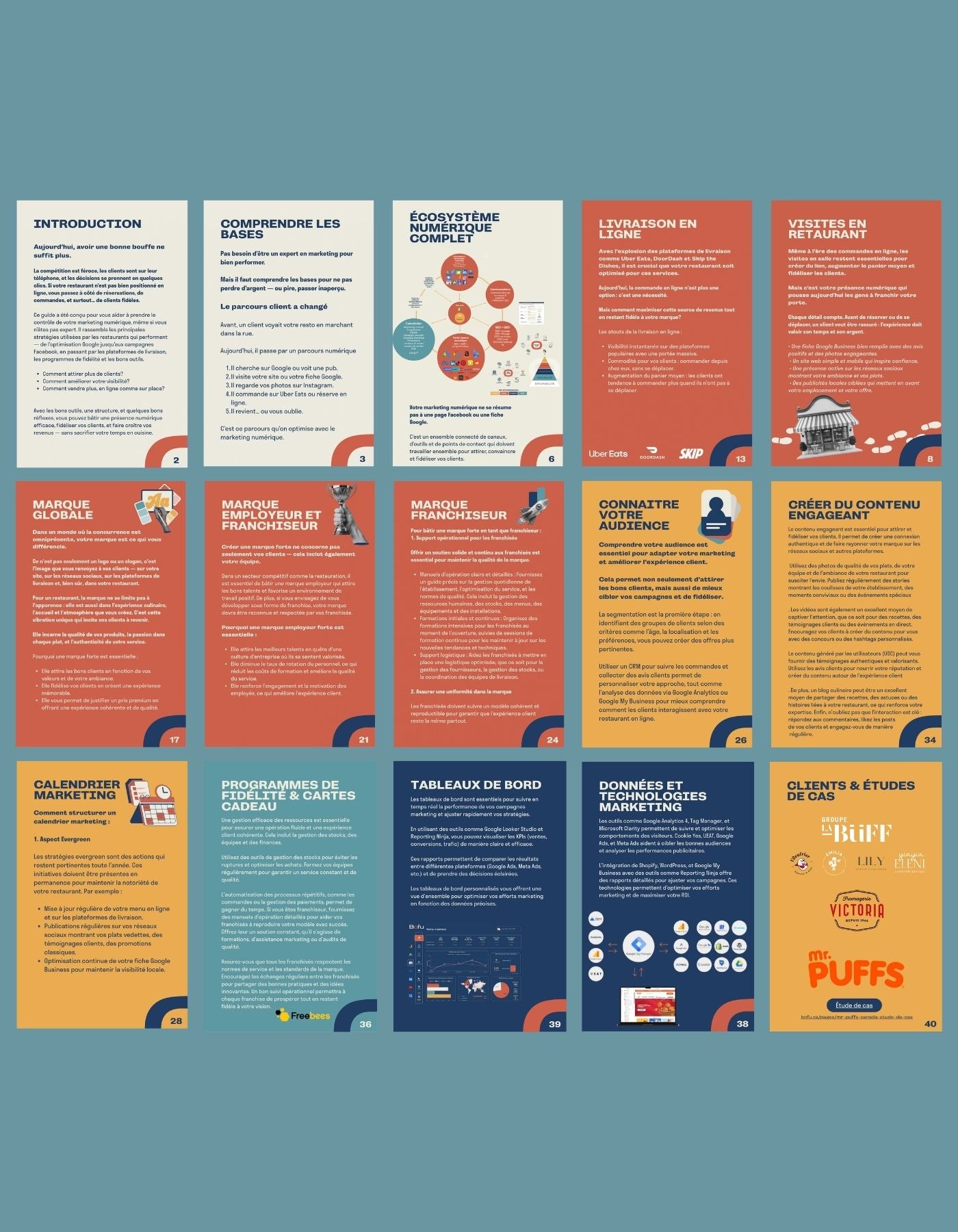Running a restaurant is already complex. Managing multiple restaurants—or building a network of franchises—requires even more discipline, structure, and vision. Effective management of internal resources and franchisee support is what separates a chain that grows consistently from one that quickly stalls.
Here's how you can structure your operations and support your franchisees for sustainable growth, without sacrificing quality or your brand's DNA.
Structuring your resources to perform better
Resource management is first and foremost the ability to standardize without dehumanizing . You must maintain a strong culture, while making your operations reproducible.
Good practices to implement:
-
Clear operations manual : procedures for service, kitchen, opening/closing, inventory management, etc.
-
Shared tools : Google Drive spreadsheets, scheduling software (e.g. 7shifts), timekeeping and performance tracking systems.
-
Training process : documented, duplicable, accessible online or via internal videos.
-
Regular quality monitoring : checklists, internal audits, mystery shopping or automated customer assessments.
Supporting your franchisees: a coaching role, not just a supervisor
If you are a franchisor or in the process of becoming one, you must provide a framework, support, and tools for growth .
Here are the essential pillars of support to offer:
1. Initial and continuing training
The franchisee (and their teams) must be trained as if they were at your main table. Offer training on customer experience, operations, HR management, and brand culture.
2. Centralized + Localized Marketing
Provide basic tools (visuals, texts, promotional models), but leave room for local adaptation . This dual level allows for brand consistency while respecting regional realities.
3. Operational support
Stay available: weekly support, monthly visits, regular audits. Franchisees must feel they are not alone—but also not micromanaged.
4. Structured communication system
Create clear channels: private group, Slack, internal email, monthly Zoom meetings. This allows for the sharing of best practices among franchisees and strengthens the networking spirit.
How a CRM like HubSpot can facilitate internal organization
1. Recruitment and qualification of franchisees
With HubSpot's CRM, you can create a pipeline of potential franchisees and automate their qualification.
Examples of useful modules:
-
Application form integrated into the website → automatically sent to HubSpot with scoring.
-
Automated workflows to send prequalification emails or request documents (resume, financing plan, etc.).
-
Sales pipeline dedicated to franchisees to track each step (request, interview, validation, signed contract).
Bonus: You can also connect tools like Calendly so candidates can book their discovery call directly through the CRM.
2. Newsletters targeted by branch or profile
HubSpot allows you to segment your sendings :
-
Internal mailings: communications to franchisees, managers, teams.
-
Customer mailings: local promotions, branch news, geolocated offers.
-
B2B mailings: recruiters, partners, prospects.
Each branch can have its own segment and receive automated content, while maintaining brand consistency.
3. Centralized knowledge base
HubSpot offers an internal knowledge base module, ideal for:
-
Centralize operating guides, technical sheets, HR FAQs, hygiene protocols, brand standards.
-
Make information available 24/7 to all teams, regardless of branch.
-
Reduce dependence on operational support by promoting autonomy.
4. Smart chat with AI and local redirection
With HubSpot Conversations, you can set up a smart automated chat :
-
Answers to frequently asked questions related to services (menus, timetables, reservations, delivery).
-
Smart redirection to the right branch based on customer location.
-
After-hours customer support through guided scenarios.
Use case: A customer searches for Laval's opening hours — the chatbot automatically detects this and displays the information from the local listing.
5. Operational monitoring with the “Tickets” module
Each branch can open a service ticket (e.g. system problem, marketing request, equipment breakdown).
The central team can then:
-
Assign a manager
-
Track processing times
-
Generate reports to identify areas of friction or recurring requests
6. Connection between marketing, sales and operations
HubSpot connects visibility efforts (advertising, SEO, content) with field results:
-
Marketing performance tracking by branch
-
Analysis of traffic, leads and conversions by channel
-
Measuring the return on investment on each campaign (e.g., how many leads signed up as franchisees or ordered online)
Concrete case: harmonizing without stifling
A successful restaurant network succeeds in standardizing the essentials (menu, branding, customer experience) while leaving room for local initiative .
Example: same menu visual in all branches, but each branch can have a “local star dish” or a “theme day” depending on its clientele.
Conclusion
Managing multiple locations or developing a franchise network requires more than just a great product: it requires a solid structure, clear processes, and human support . By investing in your internal resources and your franchisees, you ensure growth that respects your brand, your quality... and your teams.
Competition is fierce in the restaurant world. To stand out from the crowd, invest in a comprehensive restaurant marketing strategy tailored to your goals, concept, and target audience.
















